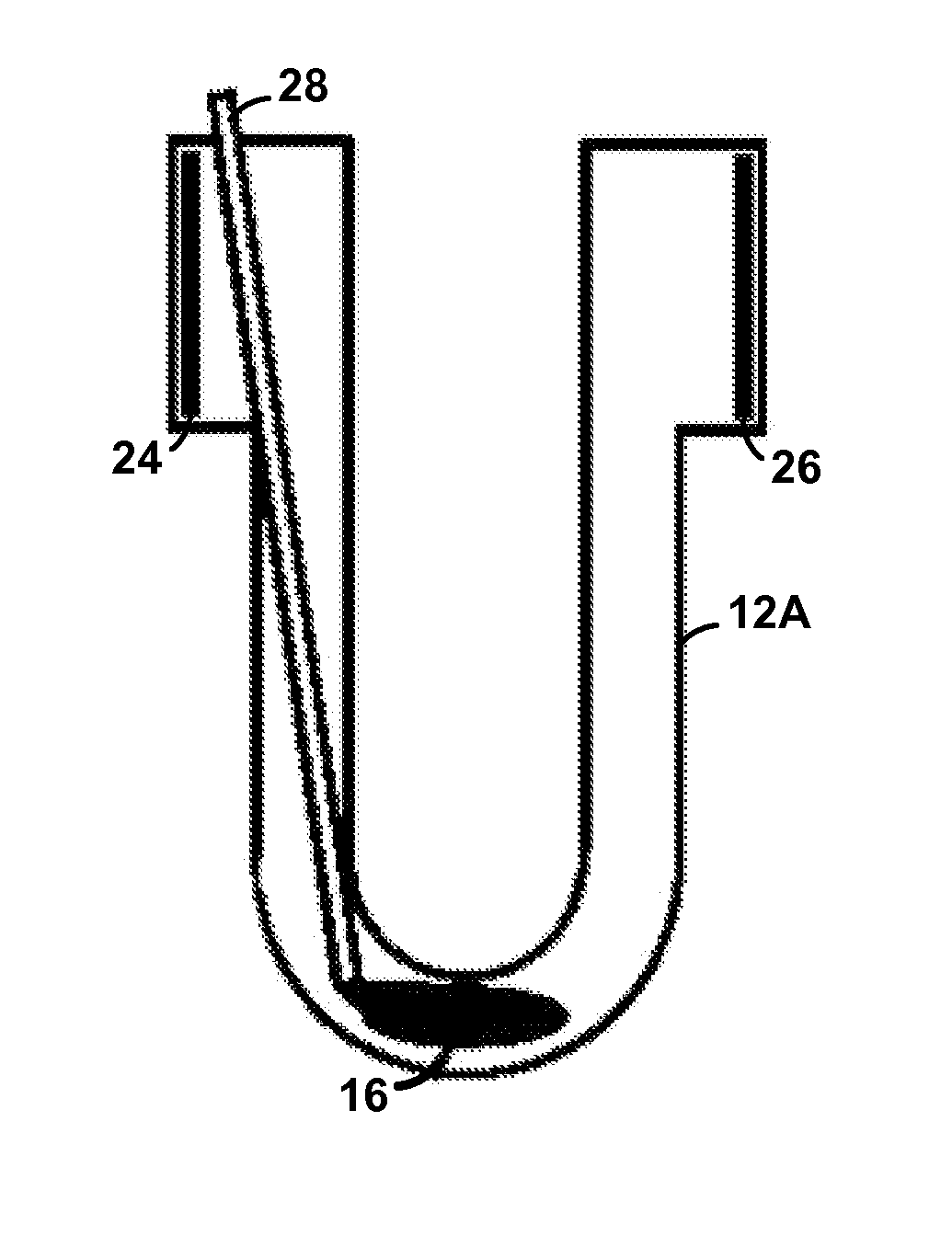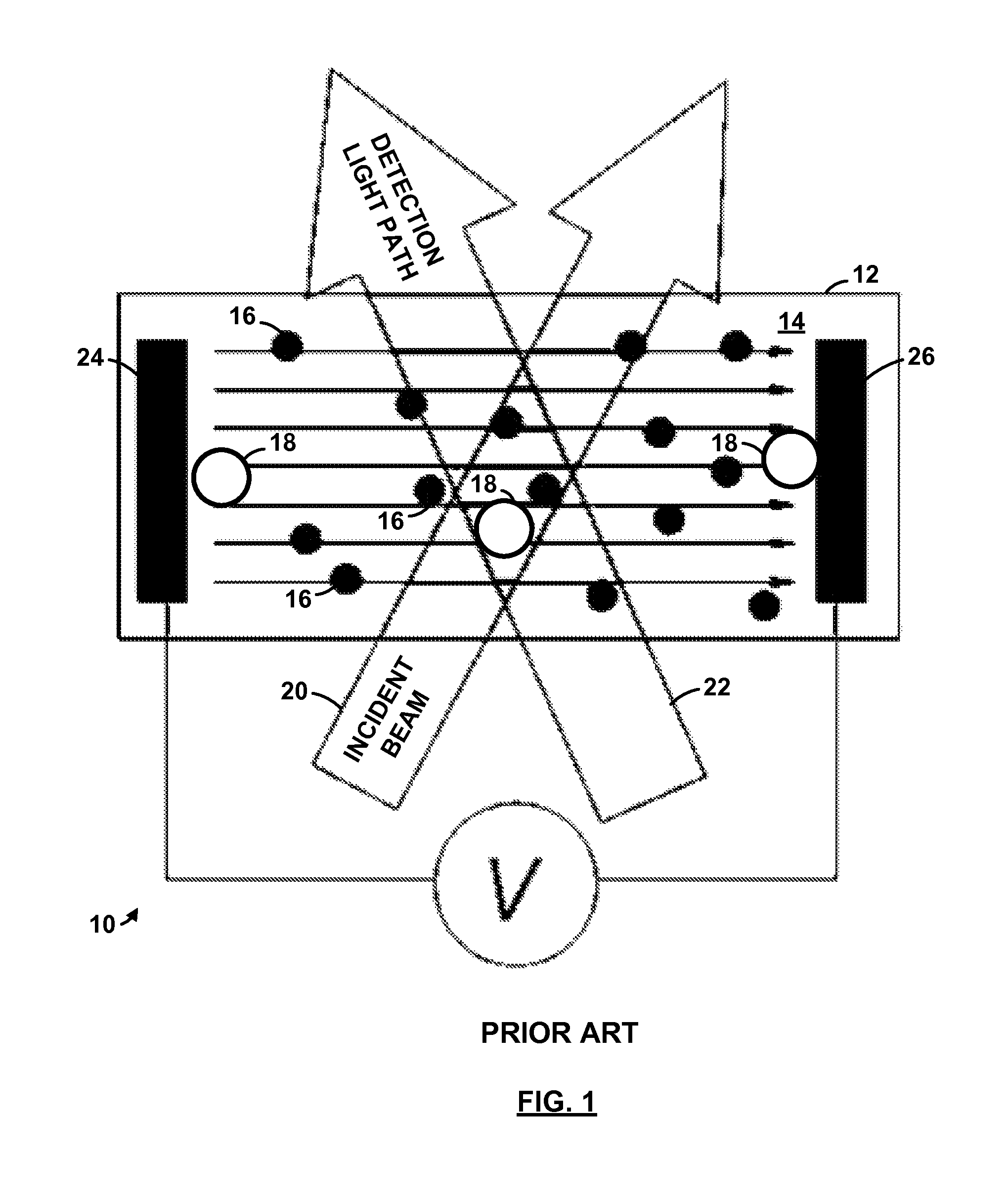Laser doppler electrophoresis using a diffusion barrier
a diffusion barrier and electrophoresis technology, applied in electrostatic separators, diaphragms, electrolysis, etc., can solve the problems of volume problems that are typically associated with lde and can also be problematic, so as to reduce the source of errors, reduce the number of unusable cells, and reduce the effect of different mobilities
- Summary
- Abstract
- Description
- Claims
- Application Information
AI Technical Summary
Benefits of technology
Problems solved by technology
Method used
Image
Examples
Embodiment Construction
[0023]Referring to FIG. 2A, an illustrative electrophoretic apparatus according to one aspect of the invention includes a cell 12 with an introduction channel 28, such as a needle. The introduction channel allows a user to introduce a sample, such as a protein sample into a buffer / dispersant 14 at a location that is separated from the electrodes.
[0024]Referring to FIGS. 2A-2D, in operation, the sample cell is filled, initially, only with the buffer in which the sample itself is dispersed in and not the sample itself (see FIG. 2A). The sample is added only to a small region in the vicinity of the detection volume and the measurement started. The measurement proceeds for long enough to record an accurate estimate of the electrophoretic mobility (see FIGS. 2B-2D), but not long enough for the sample to have reached the electrodes. This means that the sample may be retrieved, albeit diluted, afterward without the presence of electrode aggregates.
[0025]Referring to FIG. 3, the electrophor...
PUM
| Property | Measurement | Unit |
|---|---|---|
| distance | aaaaa | aaaaa |
| electrophoretic measurement | aaaaa | aaaaa |
| electric field | aaaaa | aaaaa |
Abstract
Description
Claims
Application Information
 Login to View More
Login to View More - R&D
- Intellectual Property
- Life Sciences
- Materials
- Tech Scout
- Unparalleled Data Quality
- Higher Quality Content
- 60% Fewer Hallucinations
Browse by: Latest US Patents, China's latest patents, Technical Efficacy Thesaurus, Application Domain, Technology Topic, Popular Technical Reports.
© 2025 PatSnap. All rights reserved.Legal|Privacy policy|Modern Slavery Act Transparency Statement|Sitemap|About US| Contact US: help@patsnap.com



